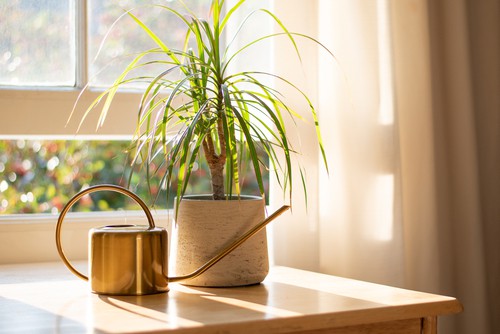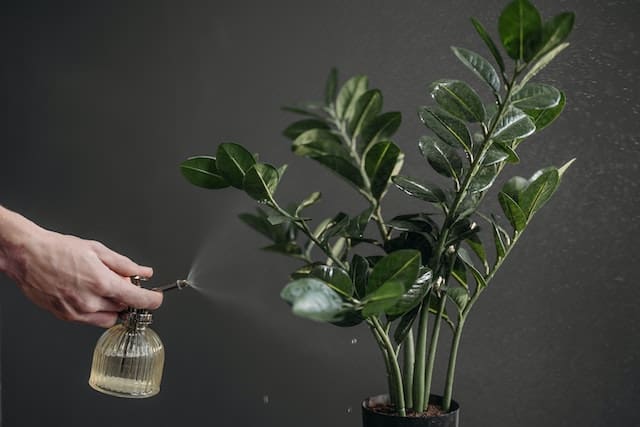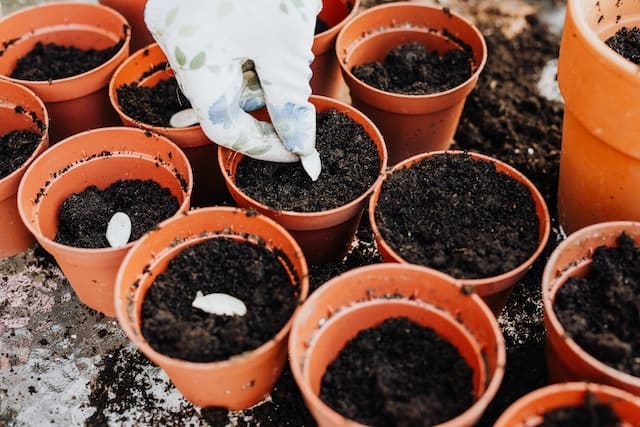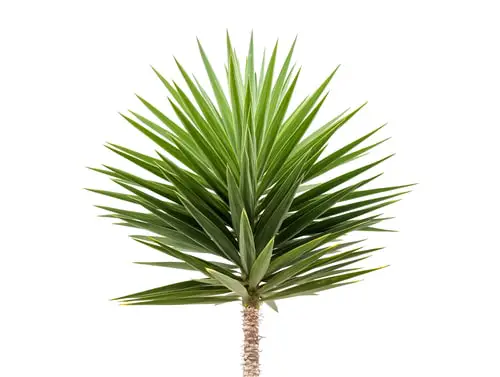Are you looking for the best plants that will make a great addition to your home or office environment? If so, you’ll probably want to make a Yucca vs. Dracaena comparison.
Of course, both plants are beautiful and unique in their own ways. But if you’re to pick just one, there can be confusion.
Yucca plants are known for their sharp, sword-like leaves and beautiful, fragrant flowers, while Dracaena plants have long, narrow leaves that come in various shades of green and are often used as a popular indoor houseplant.
In this article, we will explain the differences between the Yucca and Dracaena plants in detail. Just keep on reading to learn more about these beautiful plants!
See other plant comparisons:
- Philodendron Lime Fiddle vs. Golden Dragon
- Spider Plant vs. Dracaena
- Philodendron Lemon Lime vs. Moonlight
Yucca vs. Dracaena Summary of Main Differences
One of the major differences between Yucca and Dracaena is their leaves. If you take a close look at Yucca leaves, you’ll notice that they have a sword shape with pointed tips. On the contrary, the Dracaena are broad, thin, long, and spiky.
A Quick Yucca vs. Dracaena Comparison
| Plant | Yucca | Dracaena |
| Leaf Color | Pale blue and deep green | Green |
| Stem Color | Green | Red |
| Variegation | Yellow, blue, green, brown, and white | Yellow, green, and white |
| Flower | Pink, white | White |
Yucca vs. Dracaena Differences
1. Origin and Name
The Yucca plant is native to the deserts of the southwestern United States and Mexico. But the dracaena plant is native to the Old World tropics, particularly Africa.
Some of the names of the Yucca plant commonly refer to the leaves that grow on their stems. They include the Dagger plant, Adam’s needle, Needle palm, Aloe Yucca, and Narrow-leaf Yucca.
Other names for the dracaena plant include cornstalk dracaena, cane plants, corn plants, ribbon plants, and mass cane plants.
2. Taxonomy
Yucca Plant
- Kingdom: Plantae
- Division: Tracheophyta
- Class: Magnoliopsida
- Order: Asparagales
- Family: Asparagaceae
- Genus: Yucca L.
Dracaena Plant

- Kingdom: Plantae
- Phylum: Magnoliophyta
- Class: Liliopsida
- Order; Asaparagales
- Family: Asparagaceae
- Sub-family: Nolinoideae
- Genus: Dracaena
3. Shape and Appearance
One of the distinctive features of the Yucca plant is its magnificent, spiky leaves. Generally, Yucca plants look like palm trees, which can create a tropical look in your environment.
Dracaena plants are recognizable due to their dense, glossy leaves. These leaves grow as rings around the stems and look similar to bamboo as the plants mature.
4. Differences In Color
Yucca plant leaves come in different colors, including silver-green. Some variegated varieties can be pink, blue, cream, green, and gold.
Dracaena plants’ narrow leaves can be green or have cream, yellow, or red stripes.
5. Leaf Size and Texture
Often, the Yucca leaves grow to about 1–3 ft. in length and have a stiff and leathery texture.
As for the dracaena plants, their leaf size varies depending on the species. Some leaves can be up to 24 inches long.
6. Height and Growth Rate
One major determinant of the Yucca plant’s height is its variety. A small variety can grow to 2 ft. tall and 4 ft. wide. Larger varieties can be 30 ft. tall and 25 ft. wide. They are slow-growing plants.
Depending on the variety, a dracaena plant can grow to be 2–10 ft. tall and 2–4 ft. wide. They are also slow-growers.
7. Watering

Yucca plants are native to desert areas, which means they can survive on little water. Even if their soil is dry for a short time, the Yucca plants will still flourish.
In the case of the dracaena plants, they don’t thrive on dry soil. While you shouldn’t overwater the soil, you should also avoid under-watering as the plant leaves can get crispy.
Yucca vs. Dracaena Similarities
1. Sunlight
Both plants will grow perfectly well when they get bright, indirect sunlight. If a Yucca plant is in a sunny area, its leaves will turn brown and crispy.
The same rule applies to dracaena plants; they love indirect sunlight. Too much exposure to strong light may cause spots in their leaves.
Keep these plants in a place where they can get 6 hours of indirect light every day.
2. Potting and Soil

Yucca and Dracaena plants do best in pots with good drainage holes. This will help to prevent root rot and other problems that come with excess water in the soil.
As for the soil, both plants require acidic soil conditions of 6.0 to 6.5 PH. They also need nutrient-rich soil, as with other plants.
3. Fertilizer
Yucca plants and Dracaena can both benefit from liquid or water-soluble commercial fertilizers during their growing season. During winter, these plants do not need fertilizers.
4. Temperature and Climate
Provide the Yucca plant and Dracaena with temperatures of between 65 and 75 degrees Fahrenheit. Both plants cannot grow well in extremely hot environments. They’ll thrive in warm environments.
Common Problems for Both Plants

Some of the issues that Yucca and Dracaena plants face are shared by other houseplants. These problems usually happen as a result of under-watering, over-watering, excess fertilizer application, nutrient deficiency, and more.
Here are some of the common problems both plants experience:
- Leaf discoloration
- Pest and disease infestation
- Root rot
- Droopy leaves
- Stunted growth
- Cold damage
- Sunburn
Conclusion
We’re sure you can now do a quick comparison of Yucca vs. Dracaena. Therefore, making the best choice between the two plants should be simple and quick.
But since both plants are easy to care for and beautiful, you may consider picking one each when you next visit the plant shop.
Frequently Asked Questions
Is There Another Name for a Yucca Plant?
Usually, the names of Yucca varieties depend on the leaves that grow on their stems. Other names you can call the Yucca plant include Needle Palm, Spanish Bayonet, Adam’s Needle, Dagger Plant, and Aloe Yucca.
Is Yucca and Corn Plants the Same?
While the Yucca plant and corn plant look similar, they’re not the same. Interestingly enough, the bark of both plants looks similar, but their leaves are distinguishable.
Dracaena leaves are broad, flexible, and soft, while Yucca has stiff and narrow leaves.
How Do I Identify Yucca?
You can easily identify the Yucca plants by their broad and spiky leaves. Besides, the plants produce a bunch of pink and white flowers.
In addition, the Yucca plants have varieties that produce flowers of different colors, including whitish-green and bluish-green.

Hey, I’m Lisa and I’ve been an avid gardener for over 30 years. I love writing, talking and living in the garden! Feel free to connect with me on my socials below

